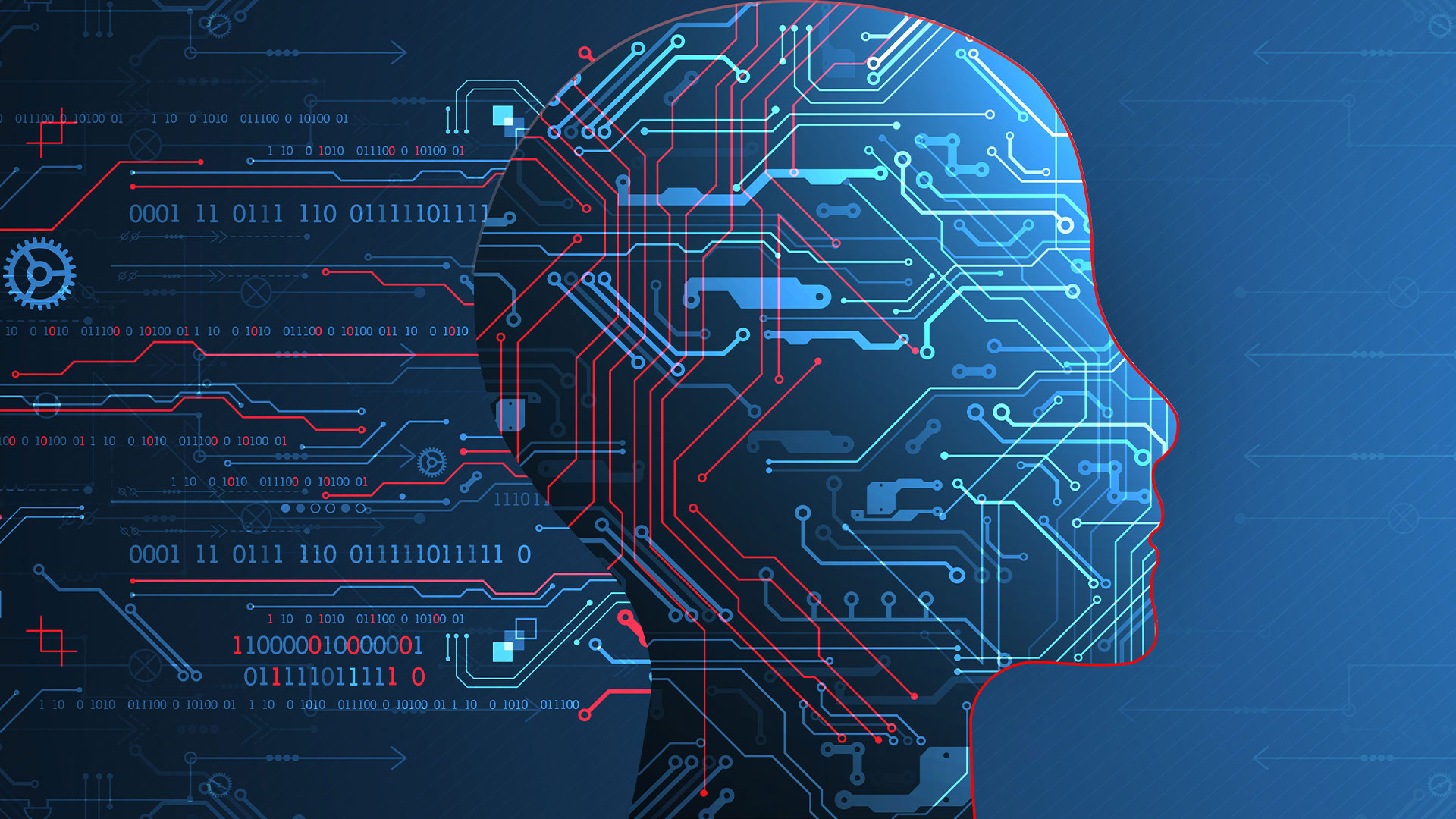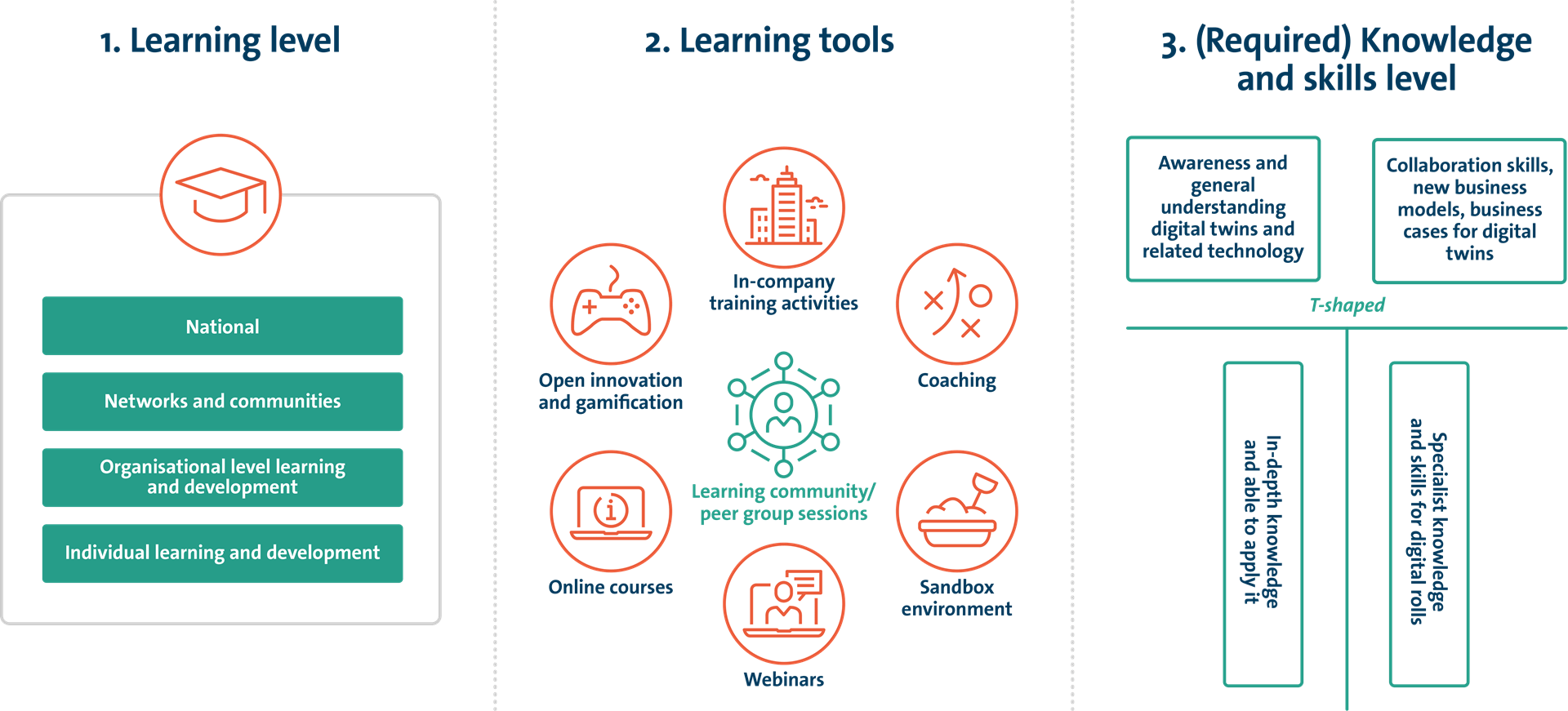Human capital and digital twins: the skills challenge

With more organisations adopting and using digital twins than ever before, 2022 is shaping up to be a big year for related digital ecosystems. But meeting that demand could create a significant skills gap.
What you'll learn
Three dimensions for your human capital agenda
What points to consider when developing such an agenda
Acting as a virtual replica of a physical environment, digital twins add value by helping us understand the real world more clearly. They support, accelerate and even automate decision making. They use technology to combine multiple data sources, offer unique insights, and apply models and algorithms to give advice on how to optimise the physical environment.
Because of this power to simplify complexity, digital twins are seen as key enabler for some of the biggest societal challenges we face in our environments – like building resilience to climate change, shifting to renewable energy, and ensuring widespread access to clean drinking water.
What’s more, digital twins can help transform businesses by contributing to higher productivity, greater continuity and becoming more adaptable to change.
Because of this power to simplify complexity, digital twins are seen as key enabler for some of the biggest societal challenges we face in our environments – like building resilience to climate change, shifting to renewable energy, and ensuring widespread access to clean drinking water.
What’s more, digital twins can help transform businesses by contributing to higher productivity, greater continuity and becoming more adaptable to change.
Challenges in adopting digital twins
But there are obstacles to this change. As I’ve discussed the issue with people across the globe, it has become apparent to me that, despite their huge potential, adopting digital twins can also present significant challenges.One major challenge many organisations face is having access to high-quality, granular data. This might be due to fragmented technologies, legacy applications, or a lack of interoperability between data sources and models. It’s particularly difficult when integration is required across traditionally siloed technologies like BIM, GIS, and IoT. I find it encouraging to see that several global and national initiatives have been started in the last few years to look at the challenge of interoperability, and that they increasingly provide frameworks and reference architectures to the industry to help overcome this challenge.
Security and privacy are also significant concerns – especially for organisations working with critical infrastructure and public environments, like cities. And many digital twin strategies, roadmaps, and implementation plans run into problems when approached from a technology perspective rather than one led by business needs (For more advice on the business case for digital twins, read my practical guide to starting your digital twin journey).
But digital twins face another emerging and often under-discussed challenge: human capital implications for employee skills. International reports – like the Connected Places Catapult digital twin competency study – increasingly identify it as an adoption barrier, not just for digital twins but for data and digital transformation in general.
In this article, I’ll explore the human capital impacts of digital twins in more detail and take a detailed look at the three dimensions needed in a human capital strategy.
The digital skills gap
With over 100,000 vacancies for technical jobs in the Netherlands alone 1, there’s huge pressure on the labour market. It’s increasingly difficult to find people with the right knowledge and expertise to build digital twin like environments and support the related business implementation.And with valuable knowledge resources leaving the workforce at an unprecedented rate due to retirement, the task of finding new talent and technologies to fill the void becomes ever more important. It also means there’s a growing need to train and retrain new staff, and to help employees stay abreast of the latest technologies and industry developments.
The reality is that AI, augmented and virtual reality, digital twins, and industrial data lakes were simply not part of mainstream education 10 years ago. Gone are the days where skills were for life. Today, we need to master new skills to stay up to date throughout our professional lives 2.
Human capital in the context of digital twins
If we’re thinking about these challenges in the context of digital twins, we need to consider a couple of dimensions. First, digital twins and related technologies like AI and virtual reality are relatively new to many people, and so the labour market lacks a commonly accepted terminology.What’s more, although rapidly growing, the number of best practices and lighthouse projects are still limited, meaning there’s little inspiration for leaders to start their own digital twin journey.
It’s therefore essential that a human capital strategy combines the more theoretical insights from academia with relevant industry knowledge and practical experience – providing learning communities and field labs to accelerate digital twin development.
As I mentioned earlier, digital twin is growing in popularity, so we’re noticing it in a growing number of sectors that are in need of new capabilities. From a technology perspective, recent developments such as IoT, GIS, and BIM are now increasingly falling under the digital twin umbrella and all require new skills in your organisation. And domain experts like engineers also realise the need to learn and adopt new digital twin IT skills.
But it’s not just engineers and IT professionals that need to learn new skills. Operational and management roles in businesses now need to be upskilled so they can make the right decisions and provide guidance to ensure the opportunities offered by digital twins aren’t squandered.
After all, digital twins aren’t only about technology. They’re part of a wider digital transformation and even help to create new business models and partnerships. They act across sectors and domains, and require additional capabilities to build these eco systems. And that means today’s human capital strategies need to follow a similar logic.
The three dimensions of human capital strategy
When designing a human capital strategy, there are three main areas to consider: the learning level, the tools people will use, and the knowledge and skills they need.
With wide-ranging abilities to account for, you need a good balance of learning levels and mix of learning tools. And it’s not just technical skills that are important; human skills like collaboration are essential too. In every adaption strategy, and at every level, your human capital programme needs to consider all three aspects.
Points of consideration in developing your human capital agenda
As outlined above, a programmatic approach covering three dimensions is required for a successful human capital agenda. But there are other important points you need to consider.Firstly, when drafting such a programme, you need to take your organisation’s individual needs and existing competencies into account. A learning programme therefore starts with determining which skills and subskills are needed per job role based on competency profiles – including those from the planned community, organisation, or individual digitalisation programme.
The required skills depend on individuals’ roles as well as their job profiles – such as research, operations, maintenance, general management, etc. In most industries, professionals don’t need to be skilled data scientists but they should have enough digital literacy to work with data to identify possibilities and communicate needs to scientists, data engineers, and architects.
Next, you need to find the right mix of learning tools and activities. There are a wide range of learning tools and activities available, each with their own advantages – specifically, applicability. Online tools are an easy way to upscale learning activities and allow trainees to upskill or reskill on their own terms.
However, learning through interaction with peers is still the preferred option by many professionals and their networks – combining innovation, training, and working – and is an important way to accelerate learning. By organising innovation, working, and learning in a close-knit learning community, organisations can apply the benefits quickly using adequately trained and equipped people.
Finally, in addition to these learning programmes, it’s important to apply knowledge and skills in the real world. For example, in the Netherlands, learning communities that are part of field labs are increasingly popular. These allow multiple stakeholders – from government agencies and knowledge institutes to general organisations – to work together and explore the potential of digital twins from a real-world perspective. These communities also contribute to learning and provide valuable lessons shared across the digital twin community.
Digital academy: supporting a human capital strategy for digital twins
At Royal HaskoningDHV Digital, training and knowledge transfer is an important part of our client offering. To realise sustainable digital business transformation value, we acknowledge that we also need to ensure the right skills and knowledge are transferred.It’s why we provide enterprise architecture training to countless professionals – including coaching on our business transformation framework, such as our recently launched data stewardship training.
A good example of an integrated data and human capital strategy programme is the Dutch water sector’s Data Science and Engineering Expert Programme (DEEP). With the focus not just on technical skills but also on wider digital transformation capabilities, the programme allows data scientists and water authority engineers to come together to learn new skills, work on actual projects, and share best practices.
To find out more about crafting your own human capital strategy, visit our Digital Academy. And for more information on our vision for digital twins – including best practices and articles – visit our Digital Twin website.
1 Source: CBS Dashboard employment market (September 2021)
2 WEF report future jobs, 2018
2 WEF report future jobs, 2018
Stayupdated
Keeping up to date with the latest digital twin news? We've got you covered
